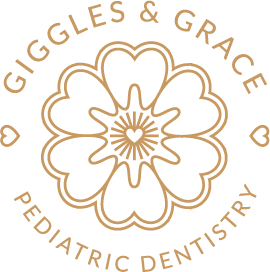Composite Fillings (“White Fillings”)
When considering tooth fillings, one of the options available are composite fillings which are made from durable composite resin that match the natural color of your child’s teeth. Because the composite fillings are tooth-colored, they look more natural and are less noticeable compared to other types of fillings.
Another benefit of tooth-colored fillings is that they are compatible with sealants allowing your child’s dentist to perform both procedures in a single sitting preventing further decay. There are other advantages to composite, tooth-colored fillings, most importantly the capability of bonding to tooth structure. Also in many cases they can be repaired by addition of more composite material.
Talk to Dr. Pham to find out which kind of filling is best for your child.
Crowns
A dental crown may not make you feel like royalty, but it is one of the premiere treatments for teeth with extensive decay or damage. Dental crowns can also used to hold a dental bridge in place, cover misshapen or severely discolored teeth, or cover a tooth after a root canal procedure. Made of either porcelain-fused-to-metal, ceramic or gold, dental crowns are placed during a multi-step process and sometimes require more than one dental visit. The first step is a dental impression. A temporary crown is then placed to protect the tooth while the impression is sent to an offsite laboratory to create the final restoration. In some cases, same-day crowns are possible, so be sure to inquire. With good oral hygiene and minimal wear and tear, your child’s beautiful new dental crowns can last up to 15 years.
Pulpotomy & Pulpectomy (“Baby Root Canal”)
The pulp of a tooth is the inner, central core of the tooth and contains blood vessels and nerves. Dental caries (cavities) and trauma to the tooth are the primary reasons for children to undergo pulp therapy.
Your child may need pulp therapy if he/she has:
- Tooth pain for no apparent reason
- A tooth that is sensitive to temperature changes
- A broken tooth
The main purpose of pulp therapy is that the tooth is not lost. Primary teeth are needed for chewing and speaking and serve as space savers for permanent teeth. Without the primary teeth to guide them, existing neighboring teeth can crowd in, causing permanent teeth to grow in crooked or tilted.
The two forms of pulp therapy for children’s teeth are: vital pulp therapy for primary teeth (pulpotomy) and non-vital pulp therapy for primary teeth (pulpectomy).
Vital Pulp Therapy for Primary (Baby) Teeth
Vital pulp therapy is for cases in which the tooth’s pulp may be salvaged. The main purpose is to maintain and protect existing healthy pulp by removing the diseased pulp tissue within the crown portion of the tooth. Next, an agent is placed to prevent bacterial growth and to calm the remaining nerve tissue. This is followed by a final restoration (usually a stainless steel crown).
Non-Vital Pulp Therapy for Primary (Baby) Teeth
Non-vital pulp therapy is required when the entire pulp is diseased (into the root canal(s) of the tooth). During this treatment, the diseased pulp tissue is completely removed from all parts of the tooth. The canals are cleansed and filled with a special material meant to be naturally absorbed by the body while the root prepares for the primary tooth to fall out and be replaced by a permanent tooth. A crown is placed on the tooth to prevent fractures.
If the pulp is severely damaged then your doctor may recommend removing the tooth entirely. If this is a case ask if space maintainers are necessary for future development.
If you suspect your child is in need of pulp therapy, contact our office or schedule an appointment for a consultation today.

